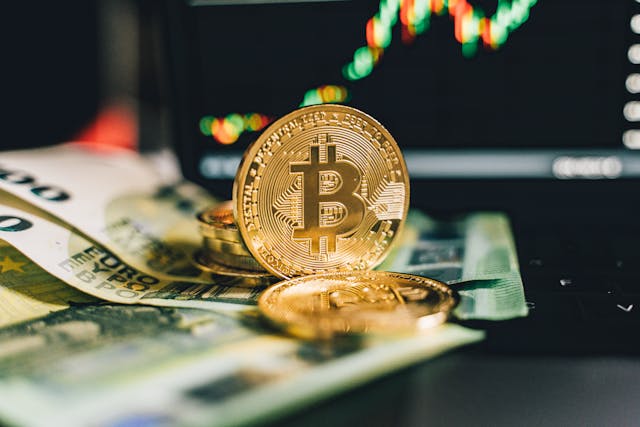Introduction
If you’ve been trading crypto futures for any length of time, you may have encountered the term “Long Short Ratio” (LSR). Understanding how LSR works can provide you with a significant edge in predicting market moves. For traders, whether you’re new to crypto or a seasoned veteran, having a reliable tool to gauge market sentiment and trends is essential.
But what exactly is the Long Short Ratio, and how does it apply to crypto futures trading? In this guide, we’ll dive deep into the concept of LSR, its importance, and how you can use it to make smarter trading decisions.
What is the Long Short Ratio?
Defining Long Short Ratio
The Long Short Ratio is a market indicator used by traders to analyze the ratio of long positions to short positions in the market. This ratio is particularly useful in the context of crypto futures trading, where traders can speculate on both rising and falling markets.
-
Long positions are when traders bet that the price of an asset will rise.
-
Short positions are when traders bet that the price of an asset will fall.
The Long Short Ratio (LSR) is the comparison of these two positions, typically expressed as a ratio like 2:1 or 1:1. This ratio helps traders gauge whether the market is leaning more toward bullish or bearish sentiment.
How is LSR Calculated?
To calculate the LSR, you simply divide the number of long positions by the number of short positions. For example:
-
If there are 100 long positions and 50 short positions, the Long Short Ratio is 2:1.
This means that for every 2 long positions, there is 1 short position, suggesting that the market sentiment is more bullish.
Understanding Long and Short Positions in Crypto Futures
Before diving deeper into the LSR, let’s quickly go over what it means to take a long or short position in crypto futures.
What Does Taking a Long Position Mean?
When a trader takes a long position, they are essentially betting that the price of the asset will rise. In crypto futures, this means buying a contract today in hopes that the price will increase, allowing the trader to sell it for a profit in the future.
What Does Taking a Short Position Mean?
Conversely, when a trader takes a short position, they are betting that the price of the asset will fall. In crypto futures, this involves borrowing an asset to sell at the current price, with the intention of buying it back at a lower price to repay the borrowed amount, keeping the difference as profit.
How the Long Short Ratio Works
The Formula Behind the LSR
The formula for calculating the Long Short Ratio is simple:
LSR=Number of Long PositionsNumber of Short PositionsLSR = \frac{{\text{{Number of Long Positions}}}}{{\text{{Number of Short Positions}}}}
For example, if there are 500 long positions and 200 short positions in a particular market, the LSR would be 2.5, indicating that there are more traders betting on the price going up than on it going down.
Interpreting LSR Numbers
-
LSR greater than 1: A ratio greater than 1 suggests that the market is more bullish, with more traders taking long positions than short positions.
-
LSR less than 1: A ratio less than 1 indicates a bearish sentiment, with more traders shorting the asset.
-
LSR equal to 1: A balanced ratio means the market is neutral, with equal numbers of long and short positions.
Why Should Traders Pay Attention to the Long Short Ratio?
The LSR as a Market Sentiment Indicator
The Long Short Ratio is often seen as a proxy for market sentiment. A high LSR (more longs than shorts) suggests that traders are bullish and expect the price to rise, whereas a low LSR (more shorts than longs) indicates bearish sentiment, with traders anticipating a price drop.
How LSR Reflects Market Trends
The Long Short Ratio can reveal whether the market is overly bullish or bearish. Extreme values of LSR might indicate an overbought or oversold market, signaling a potential reversal or correction. For instance, if the LSR is abnormally high, it could indicate that the market is too optimistic, and a price correction may be coming.
How to Use the Long Short Ratio for Crypto Futures Trading
Identifying Trends Using LSR
One of the most common ways to use the Long Short Ratio in trading is to identify market trends. If you see a high LSR, indicating a strong bullish sentiment, it could be an opportunity to enter a long position. Conversely, a low LSR might signal an opportunity to go short.
Using LSR for Market Predictions
By observing how the LSR changes over time, traders can gain insights into potential price movements. For example, if the LSR has been rising steadily, it may indicate growing confidence in an uptrend. If the LSR starts to decline, it could signal a potential reversal.
When to Buy and Sell Based on LSR
-
Buy (Long Position): When the LSR is high and the market sentiment is bullish, it could be a good time to take a long position.
-
Sell (Short Position): When the LSR is low and the sentiment is bearish, it might be time to short the market.
Key Strategies for Using the Long Short Ratio
Contrarian Strategy
The contrarian strategy involves going against the prevailing market sentiment. For example, if the LSR is extremely high (indicating a bullish market), you might decide to short the market, betting that a correction is imminent. This strategy works best in markets that are prone to sharp reversals.
Confirmation Strategy
In the confirmation strategy, traders use the LSR to confirm the direction of an existing trend. If the LSR is high and the market is trending upwards, this confirms the bullish sentiment, and traders may choose to go long. Similarly, a low LSR during a downtrend might confirm that the bearish sentiment is strong.
Analyzing Market Sentiment with LSR
Bullish vs. Bearish Sentiment
-
Bullish Sentiment: A high LSR typically signals a bullish market, where most traders expect the price to rise.
-
Bearish Sentiment: A low LSR indicates a bearish market, where traders are betting on price declines.
How LSR Indicates Market Reversals
The LSR can also be used to identify potential market reversals. If there’s an extreme LSR, such as a very high number of long positions, the market could be overextended and ripe for a pullback. A similar situation occurs when there are too many short positions, signaling that a short squeeze may be on the horizon.
The Role of LSR in Managing Risk
Using LSR to Gauge Market Overextension
A high LSR could indicate that the market is becoming overextended, and a pullback or reversal could be imminent. This helps traders to assess whether the current market conditions are sustainable or if the market is likely to correct itself.
Risk Management Strategies Based on LSR
Traders can use the LSR to implement effective risk management strategies by adjusting their positions based on the prevailing market sentiment. For example, if the LSR is extremely high, traders may reduce their position size to avoid excessive risk.
Common Misconceptions About the Long Short Ratio
LSR Doesn’t Always Predict Market Moves
While the LSR is a useful tool, it doesn’t guarantee market movement. It is just one piece of the puzzle, and traders should never rely solely on it for making trading decisions.
How to Avoid Over-Reliance on LSR Alone
It’s important to combine the LSR with other technical analysis tools, such as moving averages, candlestick patterns, and volume analysis. Using multiple indicators can help confirm trading signals and reduce the likelihood of false predictions.
Limitations of the Long Short Ratio
Why LSR Isn’t a Standalone Tool
The LSR is an excellent indicator of market sentiment, but it should be used in conjunction with other metrics and analysis. Relying only on LSR can lead to inaccurate predictions, especially in volatile markets.
External Factors Affecting LSR
Several factors can influence the LSR, such as news events, market manipulation, and large institutional trades. These factors can cause sudden shifts in the LSR, which may not necessarily reflect the underlying market sentiment.
Real-Life Examples of Using LSR in Crypto Futures Trading
Historical Examples Where LSR Indicated Trends
In the past, when the LSR indicated a significant imbalance (e.g., an extremely high ratio of longs), the market often corrected itself shortly after, providing traders with opportunities to profit from reversals.
Case Studies of Successful and Unsuccessful Trades Using LSR
Real-life examples demonstrate how the LSR can be a powerful tool for identifying market sentiment, but it’s also important to use it alongside other indicators to avoid costly mistakes.
The Future of LSR in Crypto Futures Trading
How Will the Long Short Ratio Evolve?
As crypto markets continue to mature and more traders use futures, the role of the LSR will become even more crucial. Advancements in trading algorithms and machine learning may also help refine how LSR is calculated and interpreted.
Technological Advancements in Trading and LSR
With the rise of AI and data analytics in trading, we may see more sophisticated methods for analyzing and utilizing LSR, providing traders with even more precise insights into market sentiment.
Conclusion
The Long Short Ratio is an essential tool for any crypto futures trader. By understanding how it works and how to use it effectively, traders can gain valuable insights into market sentiment, trends, and potential reversals. However, it’s important to remember that the LSR is just one indicator, and should always be used in conjunction with other trading strategies to maximize its effectiveness.
FAQs
1. What does a high Long Short Ratio indicate?
A high LSR suggests that there are more long positions than short positions, typically indicating bullish sentiment in the market.
2. Can the Long Short Ratio predict market reversals?
Yes, extreme values in the LSR can signal that the market is overextended and may be due for a reversal.
3. How do I calculate the Long Short Ratio?
To calculate the LSR, simply divide the number of long positions by the number of short positions in the market.
4. Should I rely solely on LSR for my trades?
No, LSR should be used alongside other indicators like moving averages and candlestick patterns to confirm trends and make informed decisions.
5. What is the ideal Long Short Ratio for crypto futures trading?
There is no “ideal” LSR, as it depends on the market conditions. However, extreme ratios (either high or low) may signal potential opportunities or risks.
Please don’t forget to leave a review.



I think the admin of this site is actually working hard in support of his web page, for the reason that here every stuff is quality based data.